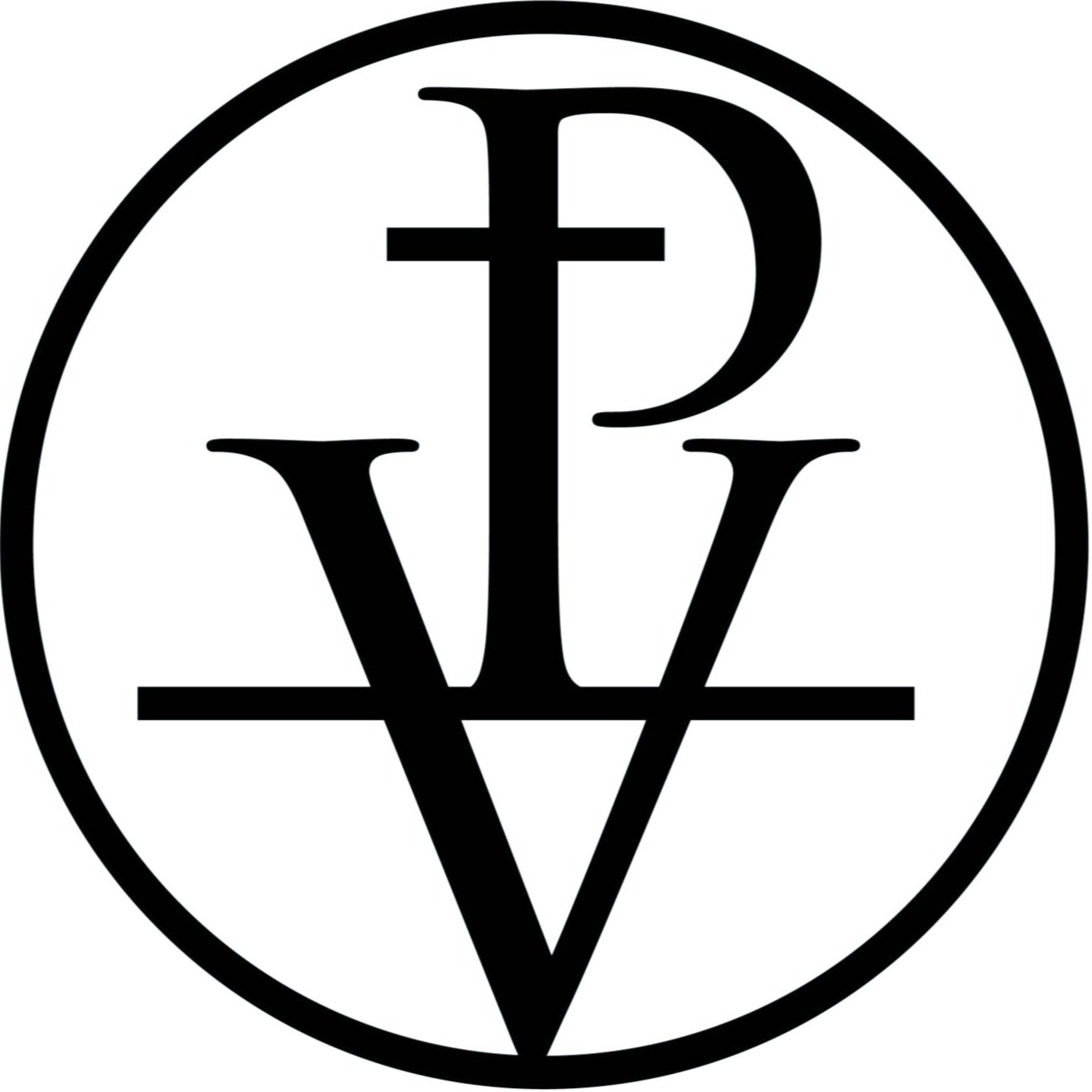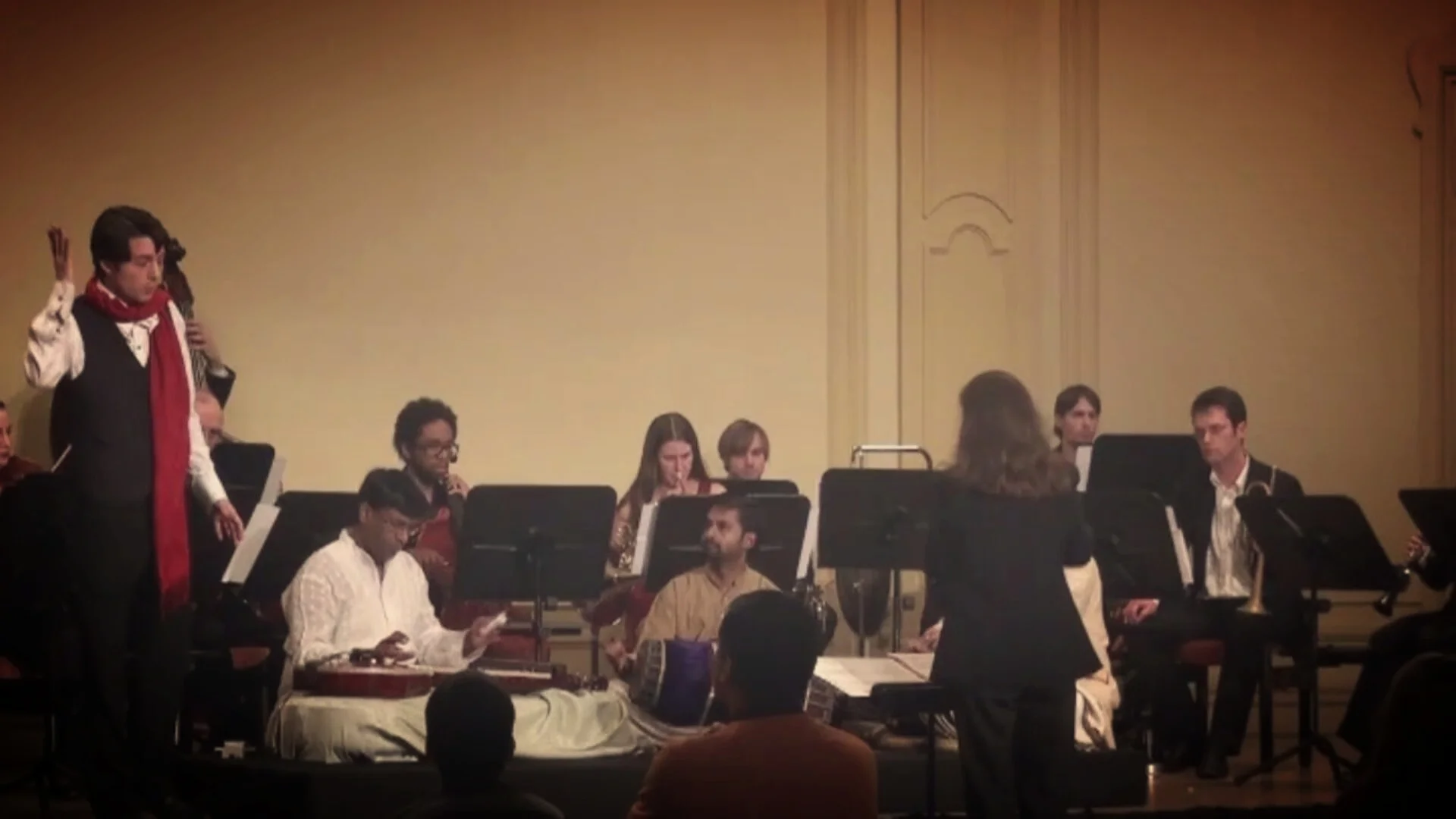
The SOng of the Lord
for Solo voice and large ensemble
text selected from the Bhagavad Gita, sung in the Original Sanskrit
"Know that reality, by which everything is pervaded, to be indestructible. No one can cause the destruction of the immutable being.”
more information below
The Song of the Lord
Excerpts from a series of concerts in Basel, Switzerland at the Basel Stadtcasino and the Goetheanum. The Evestrum Ensemble includes members of the Basel Conservatory and the Schola Cantorum.
Featuring renowned virtuoso of South Indian Carnatic music
Chitravina N. Ravikiran
Movement I - Mayamalavagowla (Excerpts)
Movement II - Bhavapriya
Movement III - Kamach (Excerpts)
The Song of the Lord - Movement III - Kamach
THE SONG OF THE LORd
text selected from the Bhagavad Gita, sung in the Original Sanskrit
TEXT
Movement I:
Mayamalavagowla
Chapter I
Verse 14.
tatah svetair hayair yukte
mahati syandane sthitau
madhavah pandavas caiva
divyau sankhau pradadhmatuh
" Lord Krishna and Arjuna, seated in a great chariot drawn by white horses, sounded their transcendental conchshells."
Verse 15
pancajanyam hrsikeso
devadattam dhananjayah
paundram dadhmau maha-sankham
bhima-karma vrkodarah
"Lord Krishna blew His conchshell, called Pancajanya; Arjuna blew his, the Devadatta; and Bhima, of terrible deeds, blew his terrific conchshell, called Paundra."
Verse 19
sa ghoso dhartarastranam
hridayani vyadarayat
nabhas ca prithivim caiva
tumulo ’bhyanunadayan
“The tumultuous uproar, resounding in the sky and over the land, pierced the hearts of the followers of Dhrtarastra.”
Movement II:
Bhavapriya
Chapter II
Sri Bhagavan Uvaca
"The blessed Lord said”
Verse 12
na tv evaham jatu nasam
na tvam neme janadhipah
na caiva na bhavisyamah
sarve vayam atah param
“Never was there a time when I did not exist, nor you, nor all these kings; nor in the future shall any of us cease to be.”
Verse 17
avinasi tu tad viddhi
yena sarvam idam tatam
vinasam avyayasyasya
na kascit kartum arhati
"Know that reality, by which everything is pervaded, to be indestructible. No one can cause the destruction of the immutable being.”
Verse 22
vasamsi jirnani yatha vihaya
navani grhnati naro ’parani
tatha sarirani vihaya jirnany
anyani samyati navani dehi
"Just as a man gives up old garments and puts on new ones, so the embodied self abandons decrepit bodies and assumes new ones."
Movement III:
Kamach
Chapter XI
“Arjuna Uvaca”
“Arjuna said”
Verse 3
evam etad yathattha tvam
atmanam paramesvara
drastum icchami te rupam
aishvaram purushottama
"Thou art, O Lord Supreme, even as what Thou hast declared thyself to be. Yet I now desire to see that form of Thine as Lord of All, Thy cosmic manifestation.”
Verse 19
anadi-madhyantam ananta-viryam
ananta-bahum sasi-surya-netram
pasyami tvam dipta-hutasa-vaktram
sva-tejasa vishvam idam tapantam
"I see Thee, You are without origin, middle or end. Your glory is unlimited. You have numberless arms, and the sun and moon are Your eyes. I see You with blazing fire coming forth from Your mouth, burning this entire universe by Your own radiance, energizing everything ."
Performance instructions
A special note should be mentioned in regard to the performance of the Song of the Lord.
Melharmony
The work has been conceived in a method termed Melharmony. A system developed to incorporate harmonic elements into complex modal structures - such as would be frequently found in Eastern music traditions.
The Song of the Lord has taken its Melharmonic elements e.g. Modes, Scales. From the Carnatic tradition of South India, using three distinct ragas.
Movement I : Mayamalavagowla – 15th Mela Janyam
Movement II: Bhavapriya – 44th Mela Janyam
Movement III: Khamach – 28th Mela Janyam
It should be noted that the intervals of these scales do not pertain to Western Equal-tempered intervals, and in fact each mode carries its own unique microtonal inflection.
Further Instructions regarding the modes
The three Ragas (modes) used are not simply scale sequences as displayed on a staff, but carry their own inherent idiosyncratic qualities, that make a scale into what is known as a raga, a word indicating mood, or atmosphere. An example of a further indication in rendering a raga would be that there should never be any oscillation or vibrato on the tonic and dominant, these notes should be rendered plain or as still as possible, whereas the minor second in Mayamalavagowla should be played with a vibrato from the tonic.
There are a plethora of rules such as these that define a particular raga, and in an ideal circumstance, they should be obeyed throughout the composition. It would be virtually impossible for a musician trained in one tradition to cross over immediately into an entirely different system. The only way to get to the heart of any tradition - in this case Raga - would be to seek the guidance of a maestro in the said tradition and study or simply listen to high caliber performances.
Improvisation
There are extended improvised sections throughout The Song of the Lord. Not that one should deviate from the written score but that improvisatory sections should be inserted. Each movement begins with improvisation known as an Alapana.
The Alapana is an introductory improvisation often without a set tempo or meter. It is used in the Indian tradition to gradually introduce the notes of a Raga and establish its atmosphere.
Sargam
Another dimension that has been used from the Indian tradition - found both in the Northern and Southern traditions of India - is what is known as Sargam.
Sargam consists of solfeggio passages sung by the vocalist based on specific syllables and intervals. Sa Re Ga Ma Pa Dha Ni Sa. Each syllable corresponds to a not in the scale, as in Do Re Mi Fa So La Ti Do.
Given the improvisatory elements of the work no two performances are ever be identical.
SCORING
Solo Voice, Guest Artists,*
Flute, Clarinet, Horn, Trumpet, Trombone
Percussion (2 players) 1. Timpani 2. Gong, Triangle, Various improvisational set-up
Harp
Strings: I Violin, II Violin, Viola, Violincello, Contra Bass
*Percussion - Tabla or Mrdangam
Guest Artists of the Melharmonic tradition: Carnatic Virtuosi, Singers, Instrumentalists




